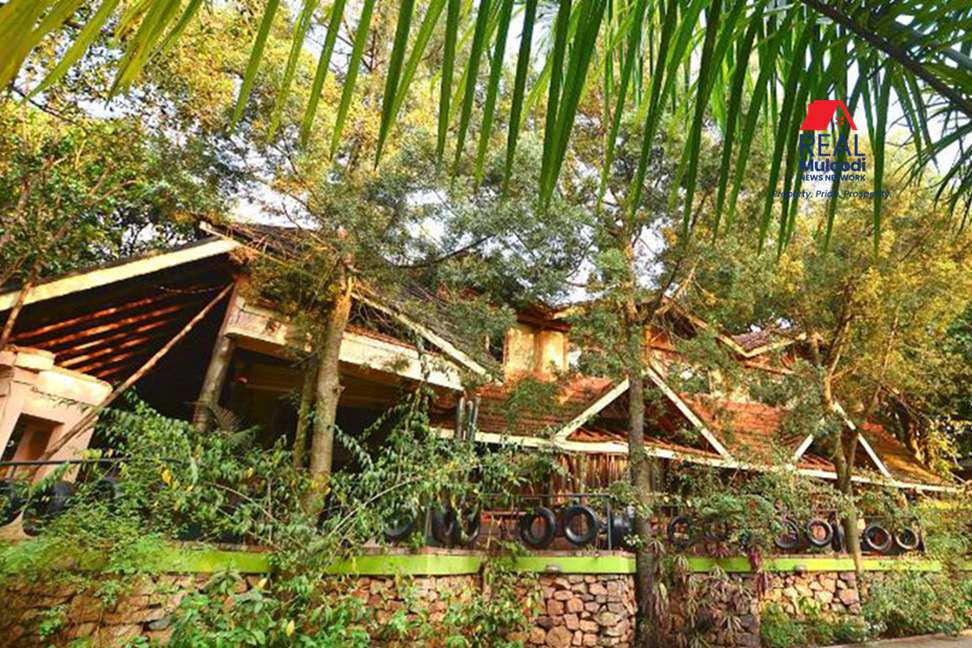UGANDA, Kampala | Real Muloodi News | Biophilic design is an environmental architectural concept that incorporates elements of nature into the built environment by mimicking outdoor environments’ shapes, textures and colours to make occupants feel more in tune with nature, and create a more harmonious and healthy living space.
Biophilic design is gaining popularity in Uganda, even in the most crowded cities, as more homeowners and property developers become more eco-conscious of the benefits it can provide.
Benefits of Biophilic Design
Improves Mental and Physical Well-being
One of the main benefits of biophilic design is that it can improve the mental and physical well-being of residents.
Studies have shown that exposure to nature can reduce stress, improve mood, and increase cognitive function.
In Uganda, where urbanisation is rapidly increasing, incorporating nature into the built environment can provide a much-needed respite from busy and concrete-laden cities.
Reduces Energy Consumption
Another benefit of biophilic design is that it can help to reduce energy consumption.
For example, incorporating natural light and ventilation into buildings can reduce the need for artificial lighting and air conditioning. This not only saves energy but also helps to reduce the carbon footprint of buildings, which is particularly important in a country like Uganda where climate change is a pressing concern.
Property Developments with Biophilic Design
Biophilic design is gaining popularity in Uganda, with several property developments incorporating elements of nature into their design. Here are some examples:
Latitude 0 Hotel, Kampala
Latitude 0 Hotel in Kampala, Uganda incorporates biophilic design principles by creating a connection between the interior spaces and the natural environment. The hotel features indoor plants and greenery, as well as natural materials such as wood and stone, to create a connection between the indoor spaces and the surrounding landscape. Large windows and skylights are used to bring in natural light and create a sense of openness and connection to the outside world. This helps to reduce the need for artificial lighting and creates a more calming and relaxing environment for guests. The hotel incorporates elements of local culture and design, such as traditional textiles, artwork, and crafts, to create a sense of place and connection to the local community.

Kampala Serena Hotel
Kampala Serena Hotel has incorporated natural materials such as wood and stone into its design.
The hotel also features a swimming pool with a waterfall surrounded by lush greenery. These features not only improve the aesthetic of the hotel but also provide a space for guests to relax and connect with nature.


Forest Cottages
Forest Cottages in Bukoto, Kampala is an eco-friendly boutique hotel, designed in harmony with the environment following biophilic design principles and aiming to fully immerse guests in a forest experience, despite being less than a 30-minute drive from the bustling central business district.
Forest Cottages features green roofs and walls, as well as natural ventilation, which helps to reduce the need for artificial cooling.


Serenada Eco Resort
Another example is the Serenada Eco Resort Kajjansi in Mukono District, on the shores of Lake Victoria. The Resort features two tropical forests, four beautiful gardens, and a beach that guests can enjoy. The objective of Serenada is to conserve nature. For nature lovers, the resort is a home to over 220 species of birds, rare butterflies and wild animals.
The development incorporates natural materials such as timber, bamboo and stone into its design.


Kigambira Safari Lodge
Kigambira Safari Lodge is one of Uganda’s many safari getaways that has incorporated biophilic design to redefine the safari experience by offering green architecture and sustainably engineered habitats.
The design is led by the landscape: by listening to and enhancing natural processes to draw nature out of the landscape and nature out of people. Their biophilic design principles reconnect people with nature.


How is Biophilic Design Implemented?
There are several ways that biophilic design can be incorporated into buildings.
Green Roofs and Walls
One approach is to use green roofs and walls, which can provide insulation and help to reduce the urban heat island effect.
Bamboo and Wood
Additionally, incorporating natural materials such as bamboo and wood into the construction can help to create a more harmonious connection between the built environment and nature.
Indoor Plants and Water Features
Another approach is to include indoor plants and water features, which can help to improve air quality and reduce stress. This can be especially beneficial in office spaces, where employees spend a significant amount of time.
Features That Make a Design Biophilic
Natural Light
Every biophilic house prefers natural light over artificial light. Common fixtures include skylights, light shelves, and glass walls.
Earthy Colours
Green, grey, brown, and other earthy tones are the most popular biophilic colours since they appear most frequently in nature. Bright colours should be used sparingly in designs.
Curved Shapes
Biophilic structures are made up of spherical, free-flowing forms. Columns, arches, porthole windows, and spherical furniture pieces feature frequently.
Ambience
Another important feature of biophilic design is sound. Water fountains, bird gardens, and other noises enhance the natural attractiveness.
Greenery
Many plants fill biophilic buildings, bringing additional vitality and natural colours into the room. Plants also enhance the air quality in the building.
Homes using these design components are more luminous, lush, and tranquil than previous homes’ angular and blocky characteristics.
Biophilic design is becoming more prevalent in Uganda. From malls to hotels and residential developments, these projects not only improve the aesthetic and functionality of the built environment but also provide benefits to the health and well-being of the residents and visitors, and also contribute to sustainability.
As urbanisation continues in Uganda, the implementation of biophilic design principles will become increasingly important to create a harmonious and healthy living space.



